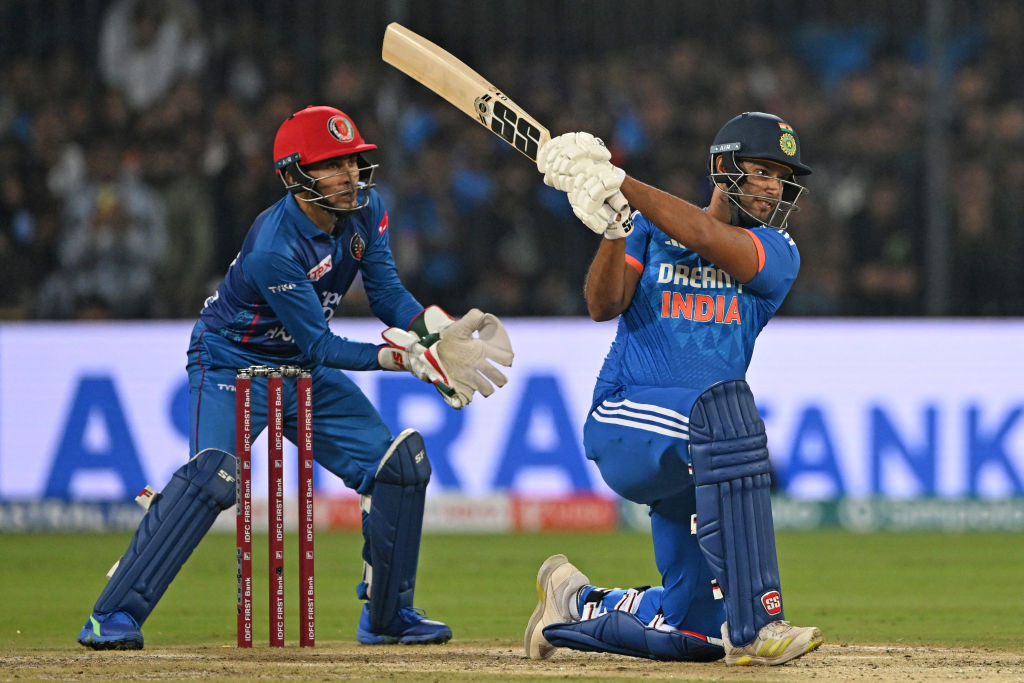India need to be brave and bat first to break their T20 World Cup hoodoo

Adelaide 2022, Dubai 2021, Mumbai 2016, Dhaka 2014, Colombo 2012 – These are the games in the last five men’s T20 World Cup which led to India’s elimination. The common factor? All five defeats came while batting first.
Setting a score has been a thorn in India‘s flesh in T20Is (and ODIs too, to an extent). The invariably slow start, the pressure building through the middle overs, and the inevitable acceleration at the death that veils sub-par totals under the mask of late momentum – you know the drill all too well by now.
The ongoing three-match T20I series against Afghanistan is India’s last before they start another T20 World Cup campaign later this year. One would assume that they would be looking to iron out their flaws and work on their weaknesses, batting first being one of them. Yet, surprisingly (or perhaps not), they have chosen to field first after winning the toss in each of the first two games.
In the history of T20I cricket, no other team has chosen to field first after winning the toss more often than India (71 times). On the other hand, they have batted first only 29 out of the 100 times they have won the toss in this format. Ten other teams have chosen to bat first more often. And it’s not without reason.
Fielding first is the way to go in T20s in general, and more so for India. Teams have won 49.81 per cent of the T20Is where they have fielded first, compared to a win percentage of 48.75 while batting first (no results and ties make up the rest). For India, both those numbers shoot up, but the former does so more drastically. India’s win percentage while chasing becomes 72.34 per cent. While batting first, it stands at 60.16 per cent.
But when has growth ever come from inside the comfort zone? India seemed to have realised that after their defeat in the semi-final of the 2022 T20 World Cup. They batted first four out of the first six times they won the toss after the Adelaide loss, once against Sri Lanka, once against New Zealand, and twice against the West Indies.
The first two of those four games resulted in victories, but the next two against the West Indies ended up in defeats. They eventually lost the series against the West Indies 2-3. It was their first bilateral series defeat in the format in their last 13 such assignments.
For all the talk of experimentation and trying out the vast pool of players they have at their disposal, India don’t like losing bilateral T20I games, let alone series. Back to the comfort zone they went.
In the seven T20Is where they have won the toss since their defeat in the West Indies, India have chased six times. The only time they batted first was in an Asian Games match against Nepal.
Balancing between voluntarily putting yourself in unfamiliar situations to challenge your weaknesses and stacking on wins by doing what you know best can be a delicate act. India have historically preferred doing the latter, a point that the second T20I against Afghanistan drove home emphatically.

India comfortably chased down the target of 173 thanks to Shivam Dube’s unbeaten 63 (32). (Photo by Punit PARANJPE / AFP)
Afghanistan put up 172 on the board, which India chased down with more than four overs to spare. It was their 69th victory while chasing (more than any other team) and their 13th (out of 16) bilateral series victory since 2022. Job done, box ticked, win percentage improved. How much value it added to their preparation for the T20 World Cup, though, is questionable.
Having won the first game comprehensively and with Virat Kohli and Yashasvi Jaiswal back in the fold to set up what looks like the first-choice top three at the moment, India couldn’t have had a better opportunity to put themselves under pressure by batting first after winning the toss.
The Holkar Stadium in Indore is one of the smallest in India and produces big runs and big sixes, quite similar to the conditions in which India lost the semi-final of the 2016 T20 World Cup in Mumbai. Setting and defending a score would have presented a tough challenge and allowed them to have relevant experience to fall back upon and learn from if they encounter similar situations in the upcoming T20 World Cup. But they took the road most travelled by.
Rohit Sharma is returning to the T20I setup for the first time after the 2022 T20 World Cup. Any scoreline other than 3-0 against an Afghanistan side without Rashid Khan wouldn’t look good on his CV particularly when his IPL captaincy has been taken away and there are questions over his future in the format.
The pressure to win might have played a part in him and India choosing the safer option – exactly the kind of risk-averse mindset that has led to their downfall in multiple T20 World Cups. If India fail to learn from their history soon, they’ll be almost certainly doomed to repeat it.
Subscribe to the Wisden Cricket YouTube channel for post-match analysis, player interviews, and much more.

